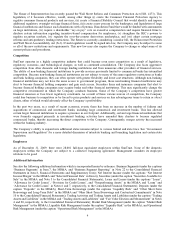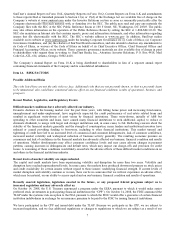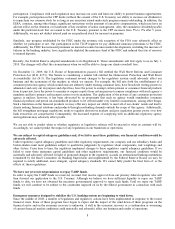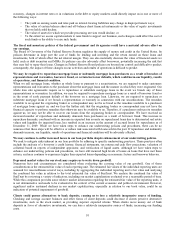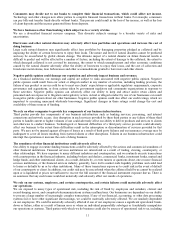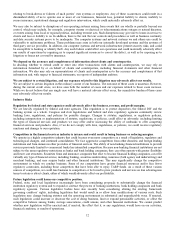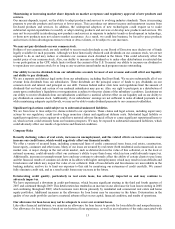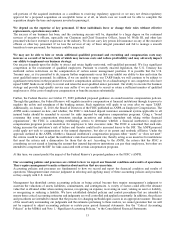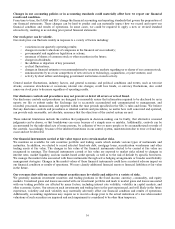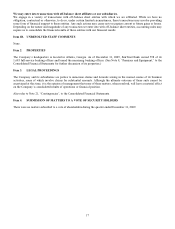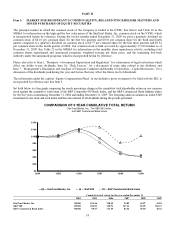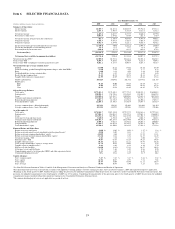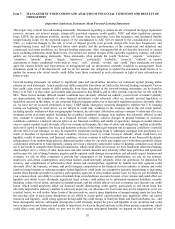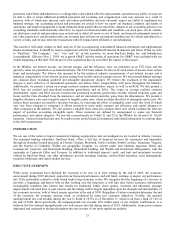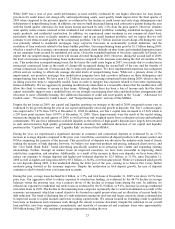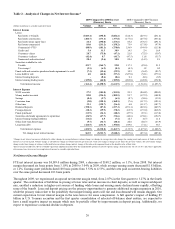SunTrust 2009 Annual Report Download - page 32
Download and view the complete annual report
Please find page 32 of the 2009 SunTrust annual report below. You can navigate through the pages in the report by either clicking on the pages listed below, or by using the keyword search tool below to find specific information within the annual report.Changes in our accounting policies or in accounting standards could materially affect how we report our financial
results and condition.
From time to time, the FASB and SEC change the financial accounting and reporting standards that govern the preparation of
our financial statements. These changes can be hard to predict and can materially impact how we record and report our
financial condition and results of operations. In some cases, we could be required to apply a new or revised standard
retroactively, resulting in us restating prior period financial statements.
Our stock price can be volatile.
Our stock price can fluctuate widely in response to a variety of factors including:
• variations in our quarterly operating results;
• changes in market valuations of companies in the financial services industry;
• governmental and regulatory legislation or actions;
• issuances of shares of common stock or other securities in the future;
• changes in dividends;
• the addition or departure of key personnel;
• cyclical fluctuations;
• changes in financial estimates or recommendations by securities analysts regarding us or shares of our common stock;
• announcements by us or our competitors of new services or technology, acquisitions, or joint ventures; and
• activity by short sellers and changing government restrictions on such activity.
General market fluctuations, industry factors, and general economic and political conditions and events, such as terrorist
attacks, economic slowdowns or recessions, interest rate changes, credit loss trends, or currency fluctuations, also could
cause our stock price to decrease regardless of operating results.
Our disclosure controls and procedures may not prevent or detect all errors or acts of fraud.
Our disclosure controls and procedures are designed to reasonably assure that information required to be disclosed by us in
reports we file or submit under the Exchange Act is accurately accumulated and communicated to management, and
recorded, processed, summarized, and reported within the time periods specified in the SEC’s rules and forms. We believe
that any disclosure controls and procedures or internal controls and procedures, no matter how well conceived and operated,
can provide only reasonable, not absolute, assurance that the objectives of the control system are met.
These inherent limitations include the realities that judgments in decision-making can be faulty, that alternative reasoned
judgments can be drawn, or that breakdowns can occur because of a simple error or mistake. Additionally, controls can be
circumvented by the individual acts of some persons, by collusion of two or more people or by an unauthorized override of
the controls. Accordingly, because of the inherent limitations in our control system, misstatements due to error or fraud may
occur and not be detected.
Our financial instruments carried at fair value expose us to certain market risks.
We maintain an available for sale securities portfolio and trading assets which include various types of instruments and
maturities. In addition, we elected to record selected fixed-rate debt, mortgage loans, securitization warehouses and other
trading assets at fair value. The changes in fair value of the financial instruments elected to be carried at fair value are
recognized in earnings. The financial instruments carried at fair value are exposed to market risks related to changes in
interest rates, market liquidity, and our market-based credit spreads, as well as to the risk of default by specific borrowers.
We manage the market risks associated with these instruments through active hedging arrangements or broader asset/liability
management strategies. Changes in the market values of these financial instruments could have a material adverse impact on
our financial condition or results of operations. We may classify additional financial assets or financial liabilities at fair value
in the future.
Our revenues derived from our investment securities may be volatile and subject to a variety of risks.
We generally maintain investment securities and trading positions in the fixed income, currency, commodity, and equity
markets. Unrealized gains and losses associated with our investment portfolio and mark to market gains and losses associated
with our trading portfolio are affected by many factors, including interest rate volatility, volatility in capital markets, and
other economic factors. Our return on such investments and trading have in the past experienced, and will likely in the future
experience, volatility and such volatility may materially adversely affect our financial condition and results of operations.
Additionally, accounting regulations may require us to record a charge prior to the actual realization of a loss when market
valuations of such securities are impaired and such impairment is considered to be other than temporary.
16


